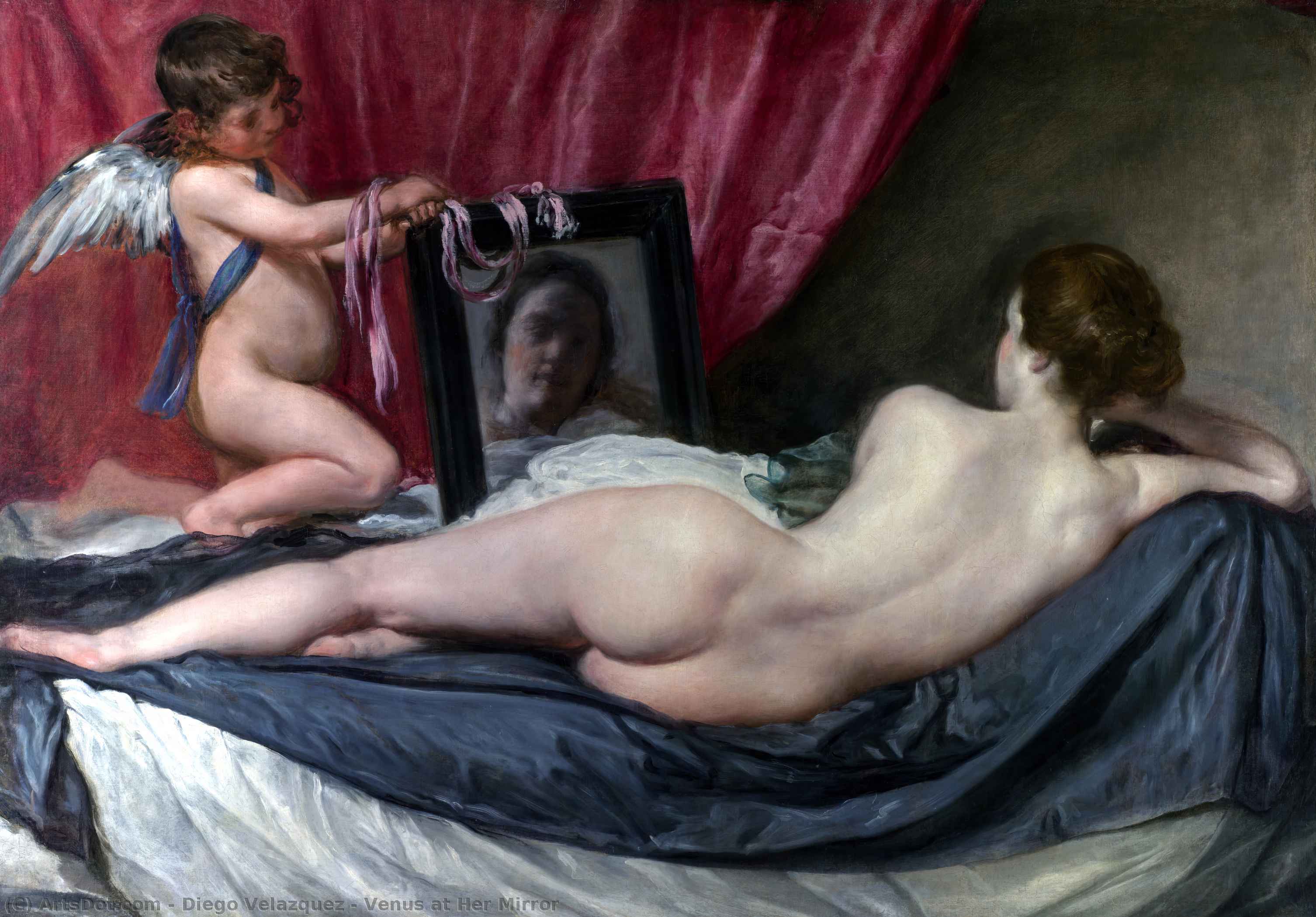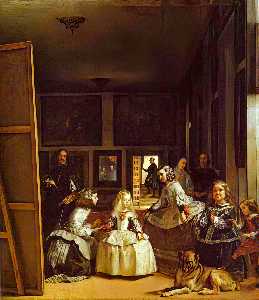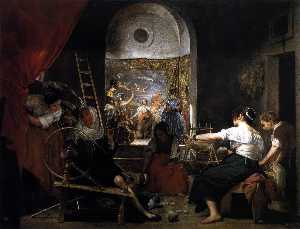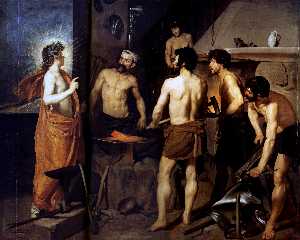Umělec: Diego Velazquez
Styl: Baroque
Technika: Oil
The Rokeby Venus (also known as The Toilet of Venus, Venus at her Mirror, Venus and Cupid, or La Venus del espejo) is a painting by Diego Velázquez (1599–1660), the leading artist of the Spanish Golden Age. Completed between 1647 and 1651, and probably painted during the artist's visit to Italy, the work depicts the goddess Venus in a sensual pose, lying on a bed and looking into a mirror held by the Roman god of physical love, her son Cupid. The painting is in the National Gallery, London. Numerous works, from the ancient to the baroque, have been cited as sources of inspiration for Velázquez. The nude Venuses of the Italian painters, such as Giorgione's Sleeping Venus (c. 1510) and Titian's Venus of Urbino (1538), were the main precedents. In this work, Velázquez combined two established poses for Venus: recumbent on a couch or a bed, and gazing at a mirror. She is often described as looking at herself on the mirror, although this is physically impossible since viewers can see her face reflected in their direction. In a number of ways the painting represents a pictorial departure, through its central use of a mirror, and because it shows the body of Venus turned away from the observer of the painting.
Umělec |
|
|---|---|
Ke stažení |
|
Oprávnění |
Zdarma pro nekomerční použití. Viz. níže. |
Diego Velazquez – Nejsledovanější umělecká díla
|
This image (or other media file) is in the public domain because its copyright has expired. However - you may not use this image for commercial purposes and you may not alter the image or remove the watermark. This applies to the United States, Canada, the European Union and those countries with a copyright term of life of the author plus 70 years.
|















 Note that a few countries have copyright terms longer than 70 years: Mexico has 100 years, Colombia has 80 years, and Guatemala and Samoa have 75 years. This image may
not be in the public domain in these countries, which moreover do not implement the
Note that a few countries have copyright terms longer than 70 years: Mexico has 100 years, Colombia has 80 years, and Guatemala and Samoa have 75 years. This image may
not be in the public domain in these countries, which moreover do not implement the